
Sabakeru: A Night of Sustainable Seafood Culture from the Japanese Kitchen
Global Exchange Food and Drink Environment- English
- 日本語
- 简体字
- 繁體字
- Français
- Español
- العربية
- Русский
Stepping into Japanese Seafood Culture
Traditional happi coats, aprons, and chefs’ hats were part of the attire at the event Sabakeru: Sustainable Culture from the Japanese Kitchen, held at a Tokyo cooking on November 29, 2023. Participants, who hailed from different regions around the globe, learned about Japanese seafood culture and the changing marine environment through the hands-on experience of prepping fish and making sushi.

Dressed for success: Participants show off their uniforms, the same worn by professional sushi chefs.
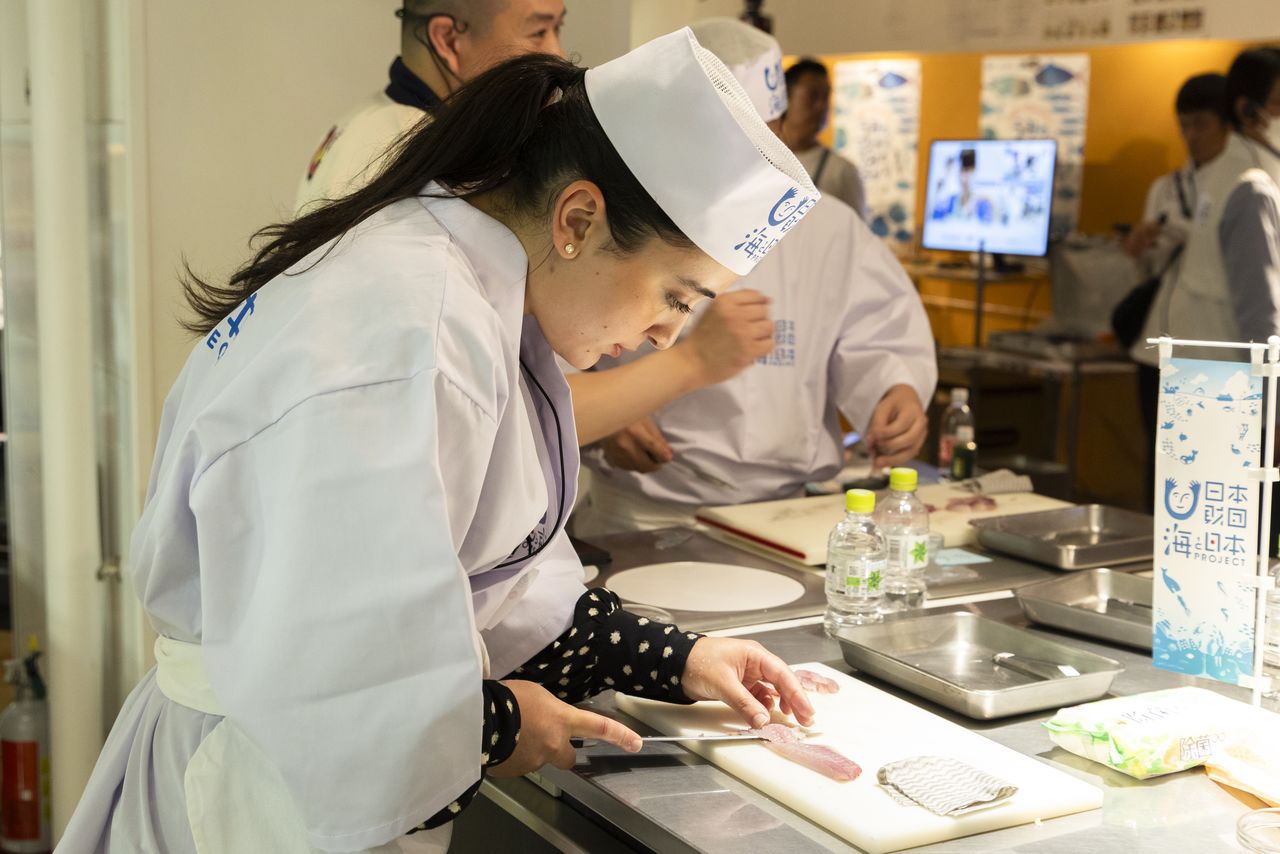
An attendee carefully filets a horse mackerel.
The event, hosted by The Nippon Foundation’s Sea and Japan Project and the multilingual web publication Nippon.com, aimed to convey the importance of preserving healthy oceans for future generations. Typically held for children and their parents or guardians, this was the first time the seminar was put on specifically for foreign residents in Japan. Simultaneous interpreting in Japanese and English was available, and staff from Nippon.com provided multilingual support, including recruiting participants, creating manuals, and giving on-site assistance.
In all, 17 people from 12 countries, including the United States, Canada, Peru, India, the Philippines, Taiwan, and Morocco, learned how Japan’s sushi and seafood industries are adapting to the changing marine environment.
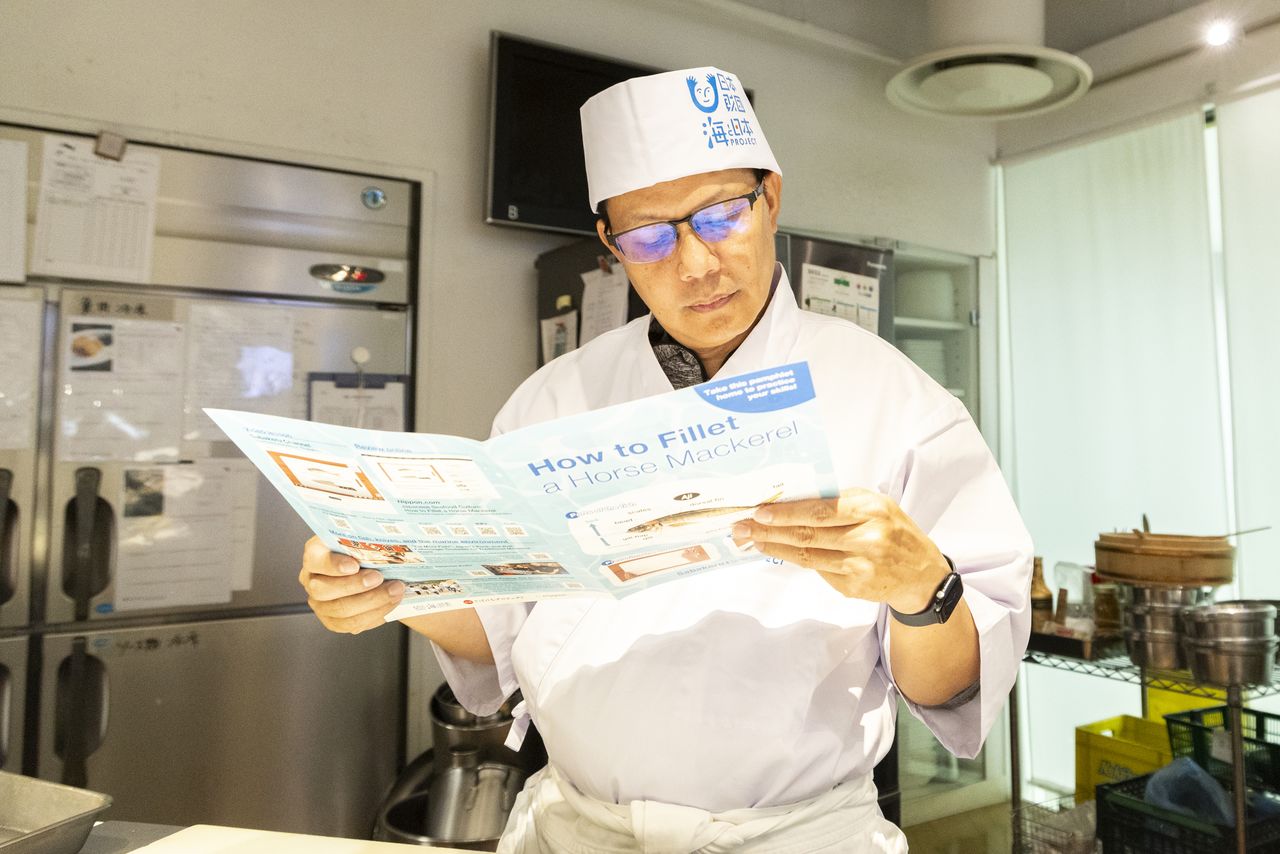
English pamphlets showing how to filet a horse mackerel were produced for the event.
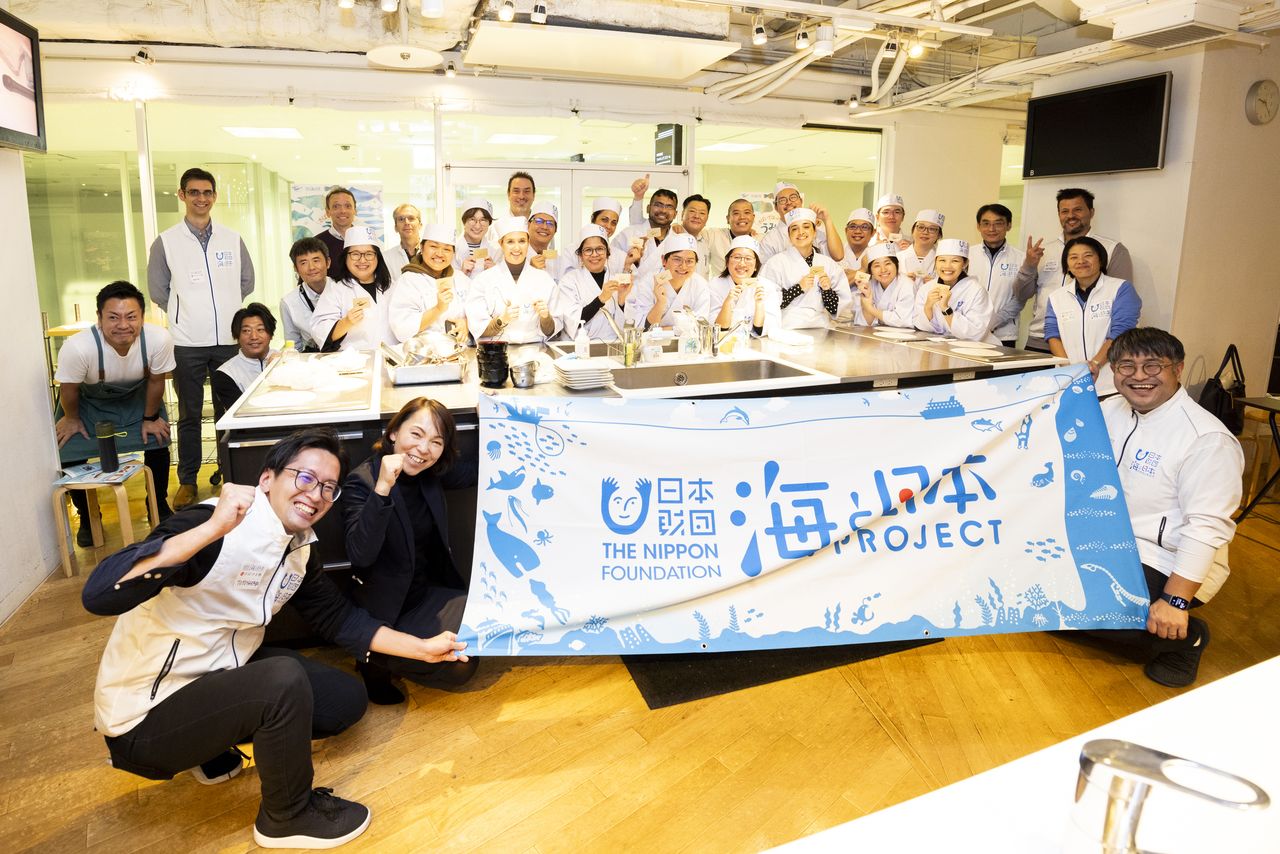
Participants and staff pose for a commemorative photo at the event.
From Sea to Sushi
The event took place amid a relaxed atmosphere and kicked off with a presentation on issues like overfishing and warming seas that are threatening the health of the marine environment. The seminar also drew attention to efforts to promote sustainable seafood, including giving those attending a taste of sashimi made from konnyaku jelly. The product mimics the flavor and texture of such culinary staples as salmon and tuna and is being championed as a means for meeting the growing global demand for sushi and other popular seafood dishes without further taxing already strained fisheries.
Attendees then turned their attention to the main event of the night: the preparation of a whole horse mackerel. The first step was filleting the fish into three pieces, or sanmai oroshi in Japanese. This was done under the guidance of Murata Hiroshi, a veteran fish handler who trains sushi chefs at chain restaurant Gatten Sushi, which operates more than 100 sushi shops both in Japan and abroad.
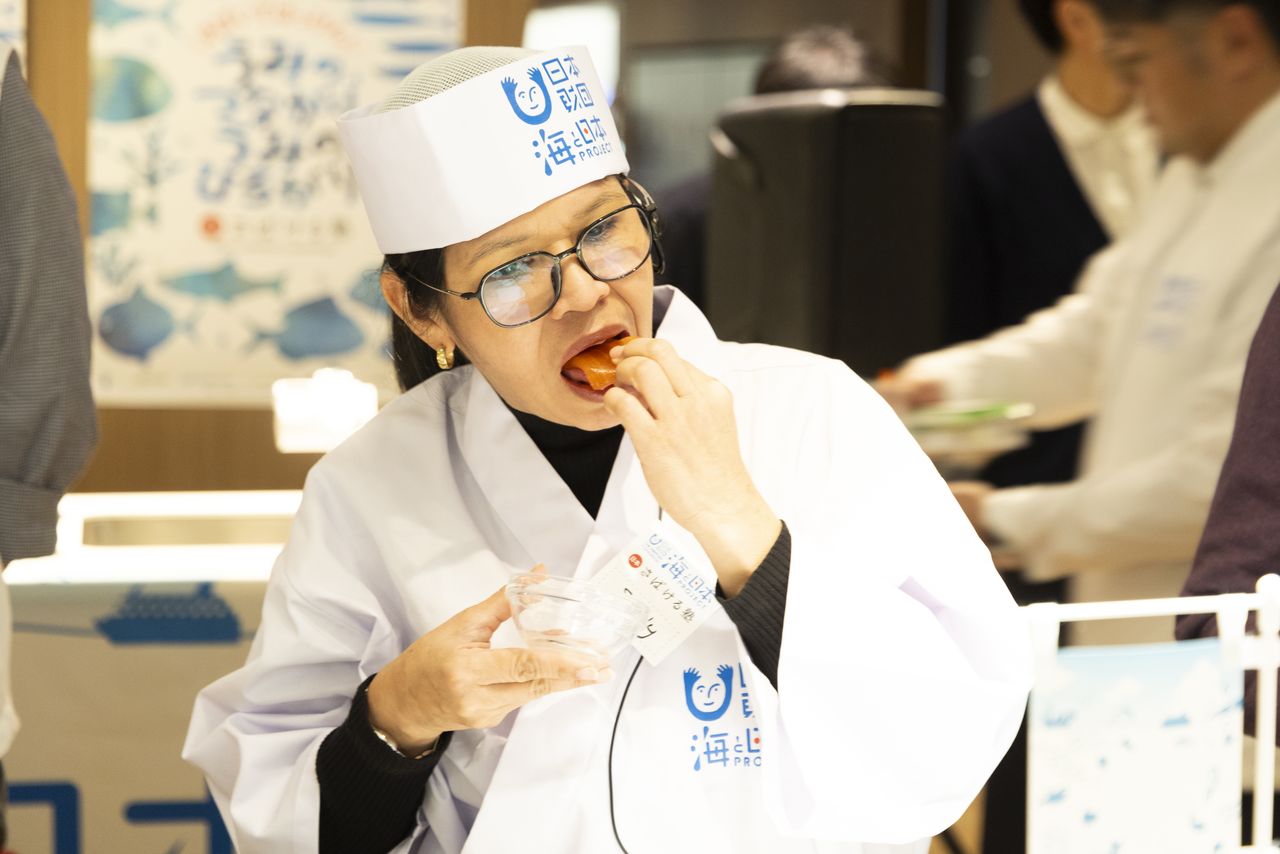
An attendee gives salmon-flavored sashimi konnyaku a try.
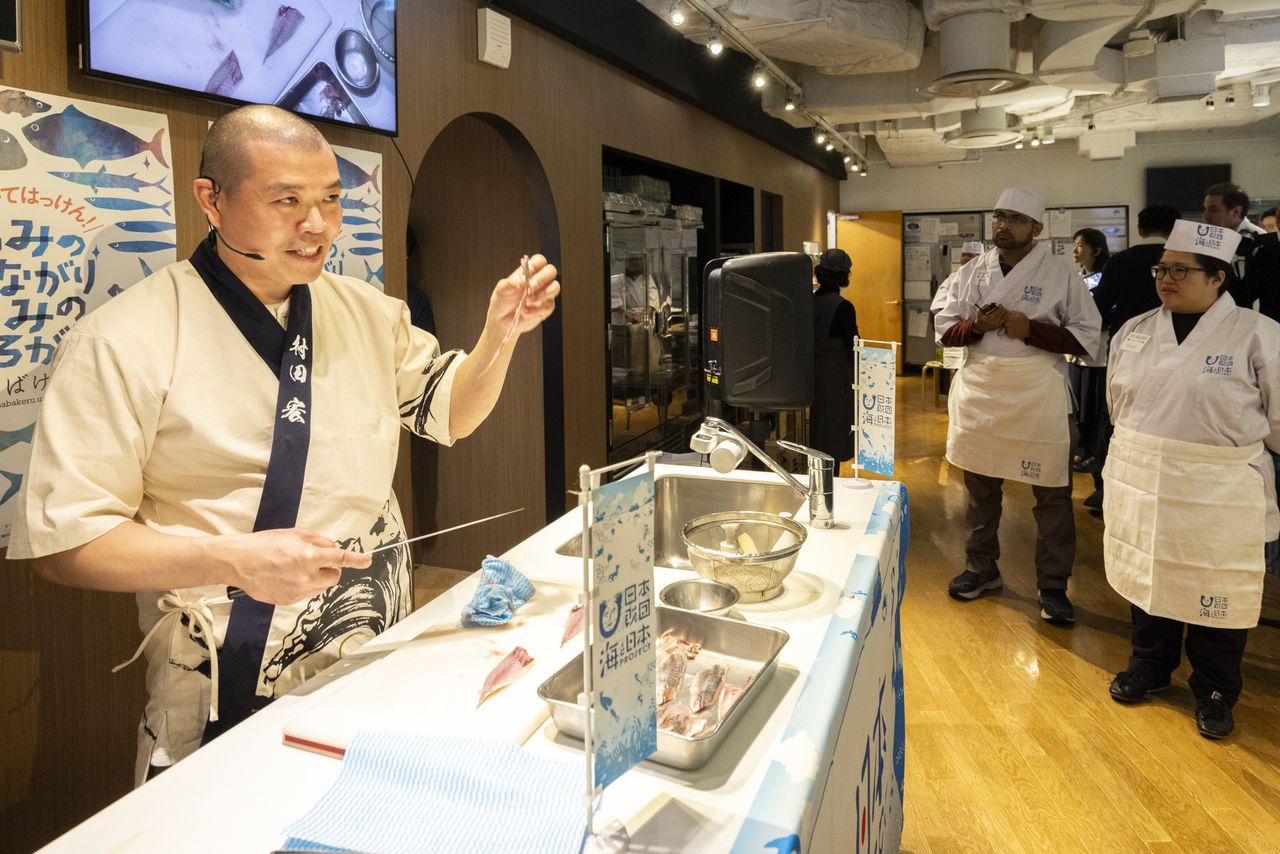
Murata Hiroshi, left, demonstrates correct slicing technique.
Murata gave a step-by-step explanation of sanmai oroshi, an essential Japanese cooking skill. With the assistance of staff at each station, even participants with little to no culinary experience were able to skillfully slice the fish to produce two succulent fillets.
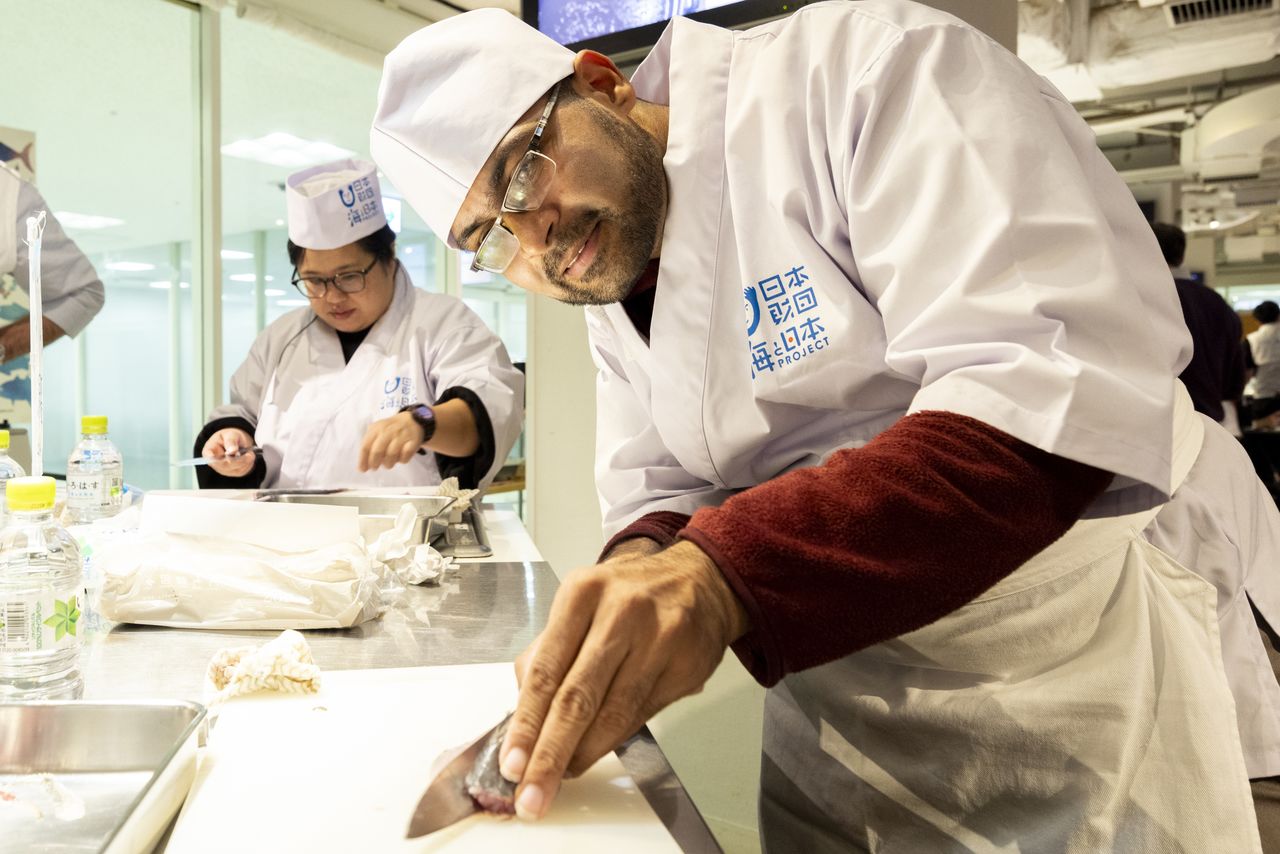
Participants learned the proper way to handle a knife when filleting.
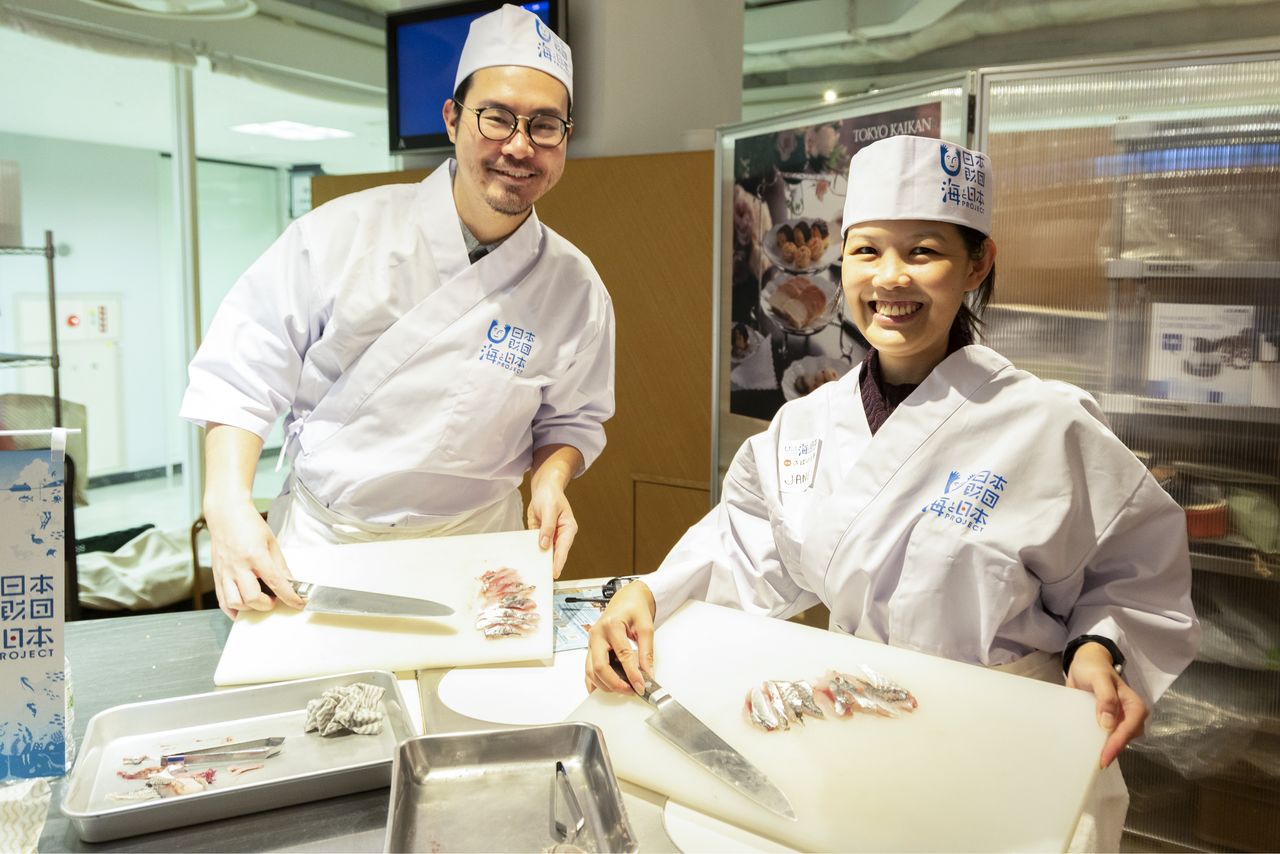
Participants show off their handy work. The two fillets were divided into eight pieces to be used in making sushi.
Participants then cut their fillets into four pieces each and prepared them for use in making kaki-no-ha-zushi. Also known as “persimmon leaf” sushi, this wrapped sushi is one of the earliest forms of the food to arise in Japan, boasting a history much older than the now standard nigiri. Leading this section was Iida Yasuyo, an employee at Hirasō, a kaki-no-ha-zushi shop in Nara that has been in business since 1861. Assisting Iida was Hirasō president, Hirai Takanori.
To make kaki-no-ha-zushi, the pieces of horse mackerel were first salted to remove excess moisture and then marinated in rice vinegar briefly, steps that preserve the meat of the fish. The slices were next placed on a hand-pressed bed of sushi rice and wrapped individually in specially prepared persimmon leaves, the antibacterial properties of which help keep the sushi edible over an extended period. Lastly, the eight pieces of sushi were placed in a dedicated wooden box and taken home to be enjoyed later, the persimmon leaf adding to the fragrance of the dish while also keeping the wrapped morsels moist.
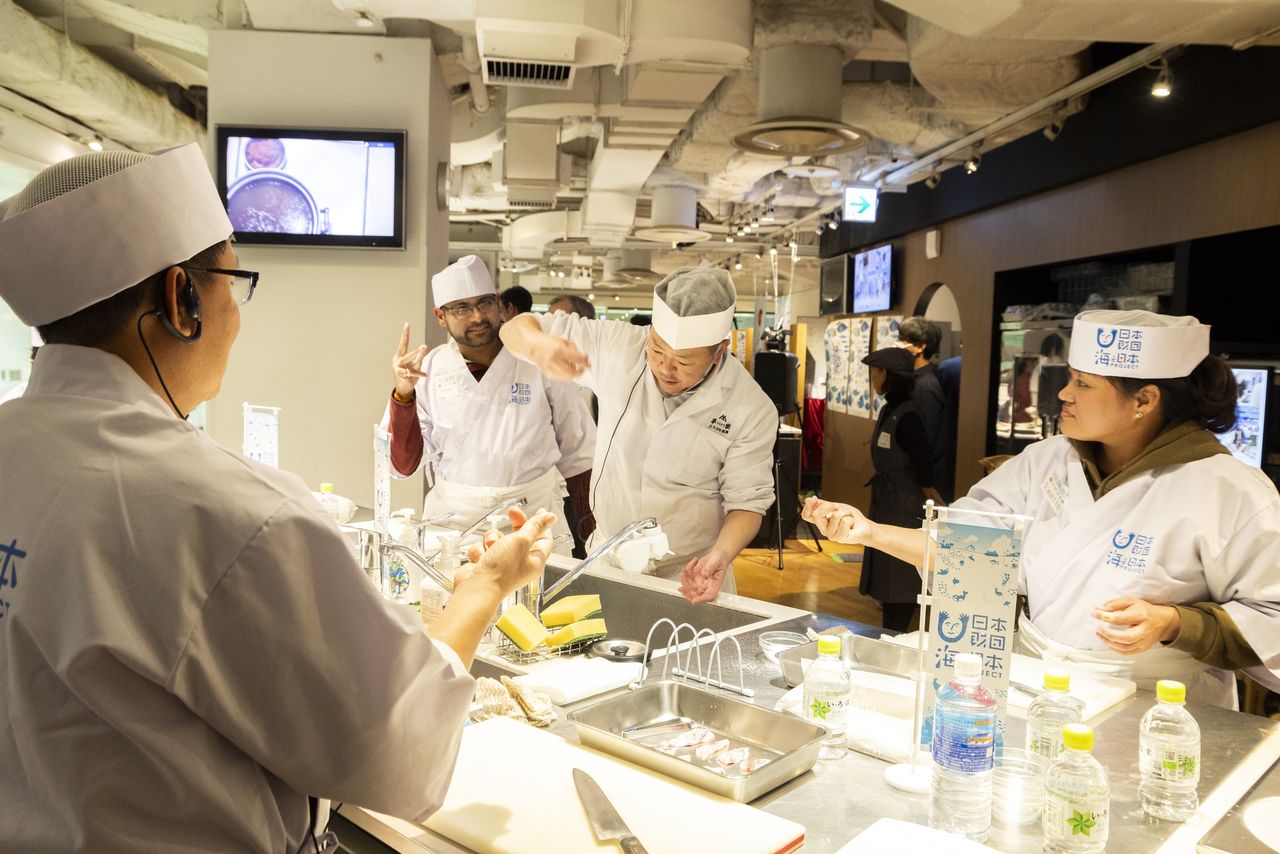
Hirai, center, demonstrates the proper technique for sprinkling salt on slices of horse mackerel.
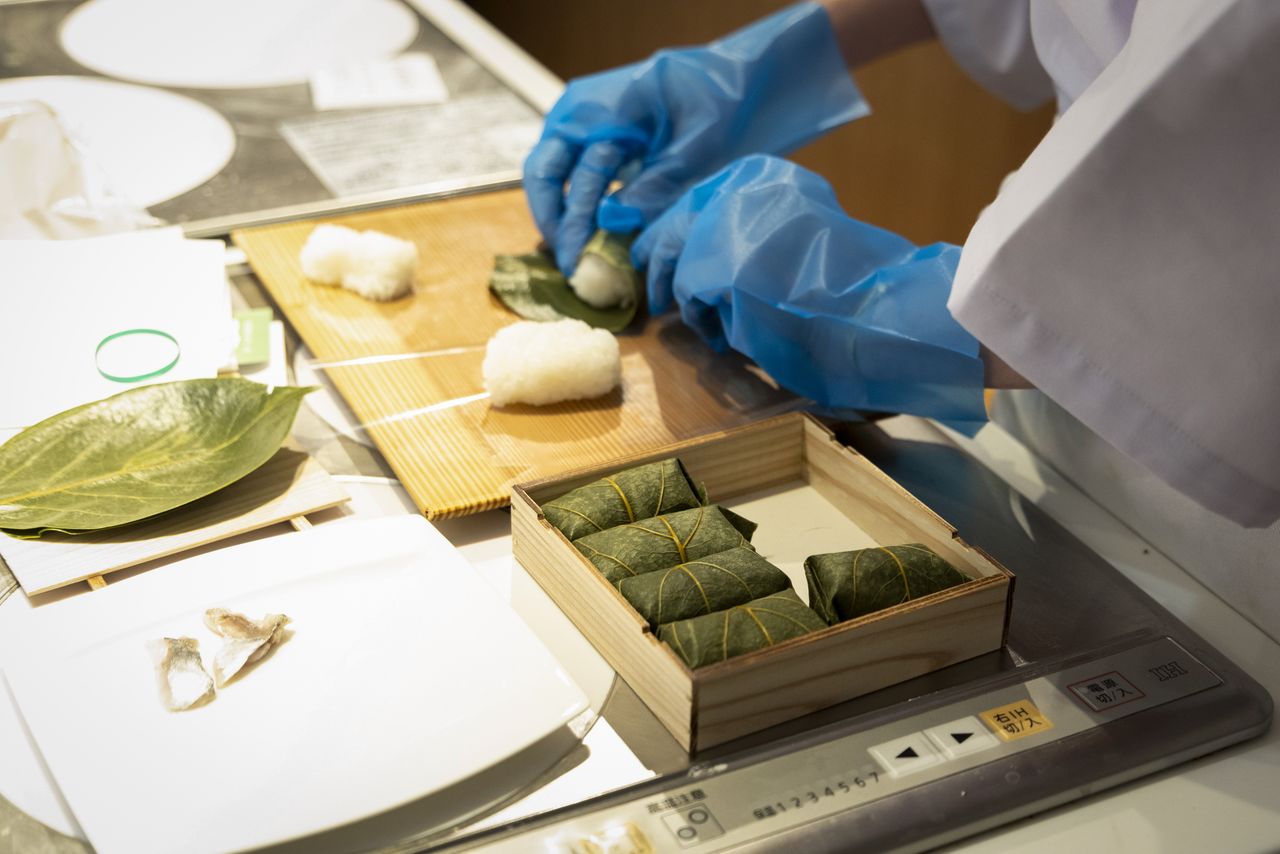
A participant prepares kaki-no-ha-zushi. According to Iida, veteran workers at Hirasō are able to wrap as many as 600 pieces in one hour.
Sushi and the Changing Oceans
In the final cooking segment, attendees tried their hands at making nigirizushi. Kokubun Shingo of the Nippon Foundation’s Sea and Japan Project introduced the toppings—amberjack, pufferfish, rabbitfish, and sea urchin—explaining that they were chosen to highlight changes to the ocean environment. Kokubun described how as the seas warm, fish are moving northward in search of cooler waters. Amberjack, once associated with the fishing ports of Toyama and Niigata Prefectures, and pufferfish, synonymous with Shimonoseki in Yamaguchi Prefecture, are now found in abundance around Hokkaidō, with fisheries on Japan’s northernmost island leading hauls of both types of fish. Rabbitfish and sea urchin are likewise migrating north, and growing more active as they do so, bringing serious ecological consequences with the two herbivore species decimating kelp forests in coastal areas.
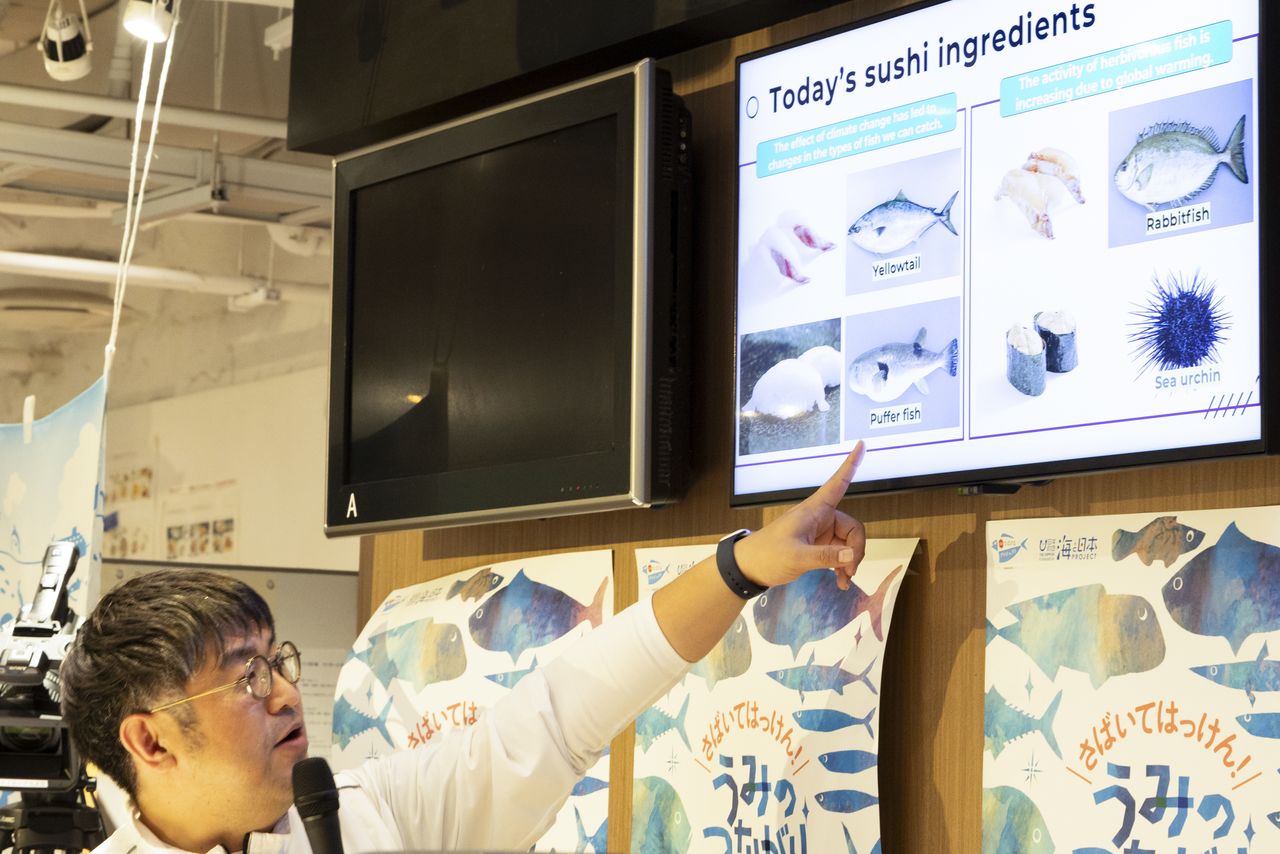
Kokubun Shingo of the Nippon Foundation’s Sea and Japan Project talks during the event.
After making 10 pieces of nigirizushi, participants sat down to enjoy the fruits of their labor and socialize with other attendees. Murata provided a sumptuous lobster miso soup that like the sushi had a message about the changing oceans: the crustacean was once the specialty of Mie Prefecture but is now caught in abundance in the northern prefectures of Ibaraki and Fukushima. Hone-senbei made by frying the bones of the filleted horse mackerel was also served, offering a delicious way to emphasize the importance of making the most of marine resources.
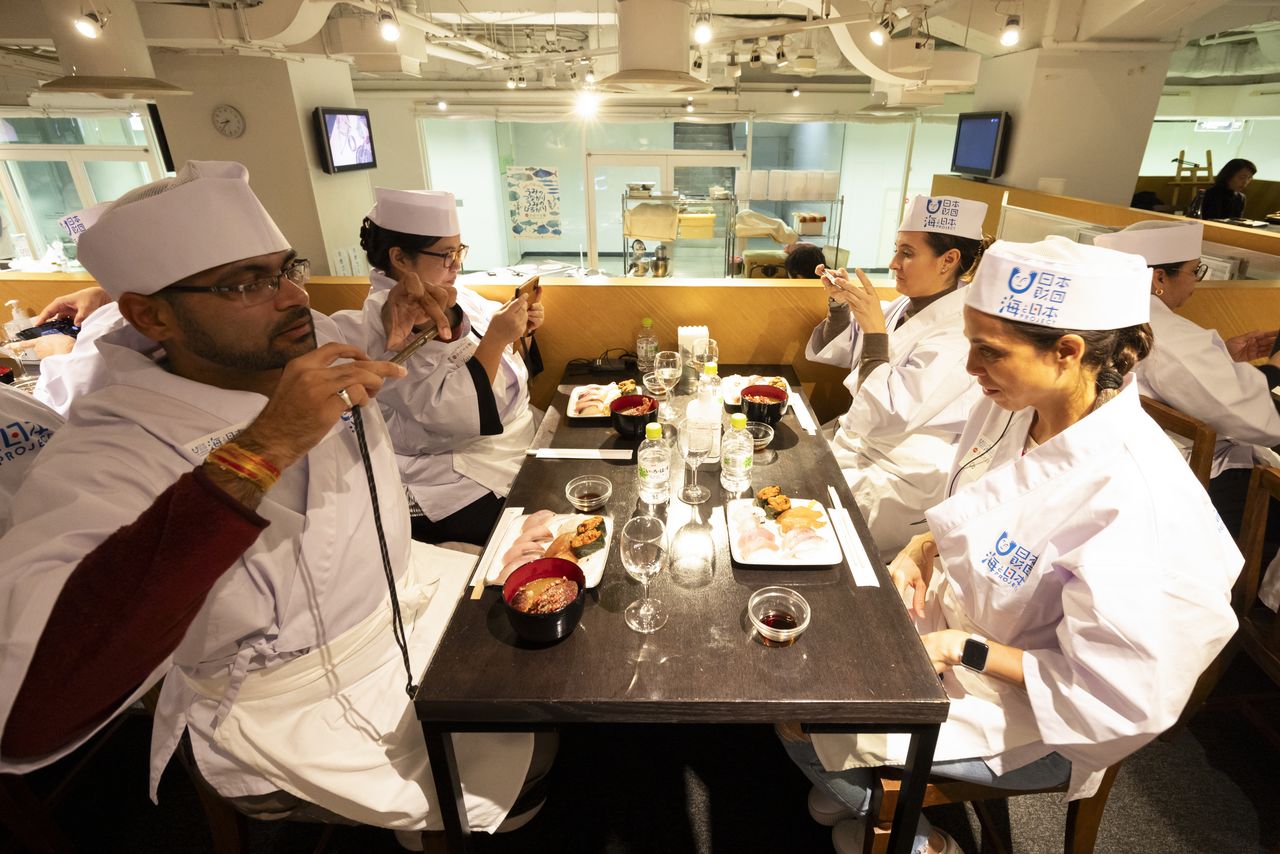
Participants snap photos of their handiwork before digging in.
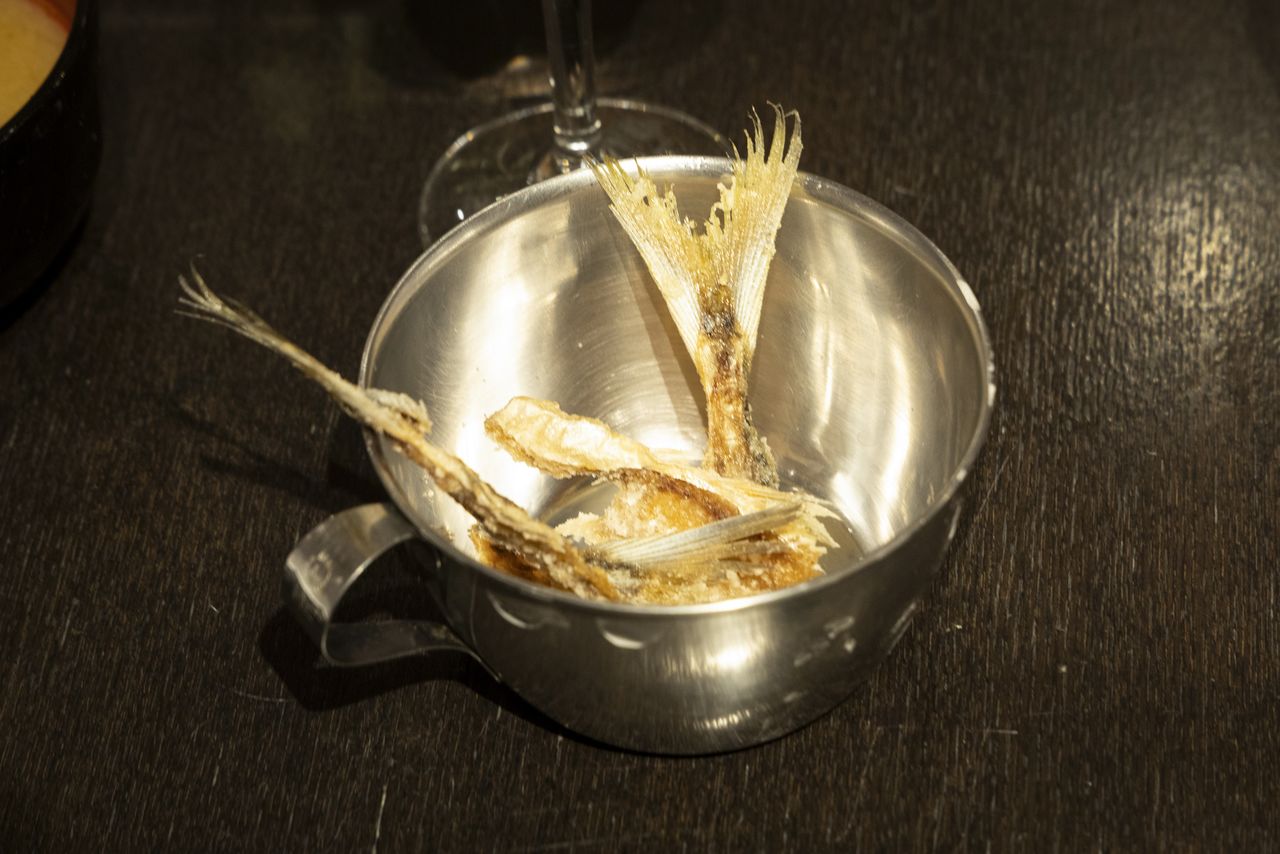
The fried bones of the horse mackerel are a crunchy and flavorful way to make use of the whole fish.
For the Future of the Ocean
The evening ended with each participant receiving a card identifying them as a “sabakeru master” in recognition of completing the seminar. Asked about their impression of the event, many attendees expressed appreciation of being able to learn about Japanese seafood culture in a fun and interactive setting and expressed a desire to support the sustainable use of marine resources going forward.
Closing the event, Kokubun expressed hope that participants would be inspired by the experience to join the growing movement focused on tackling the wide range of issues facing the world’s oceans.
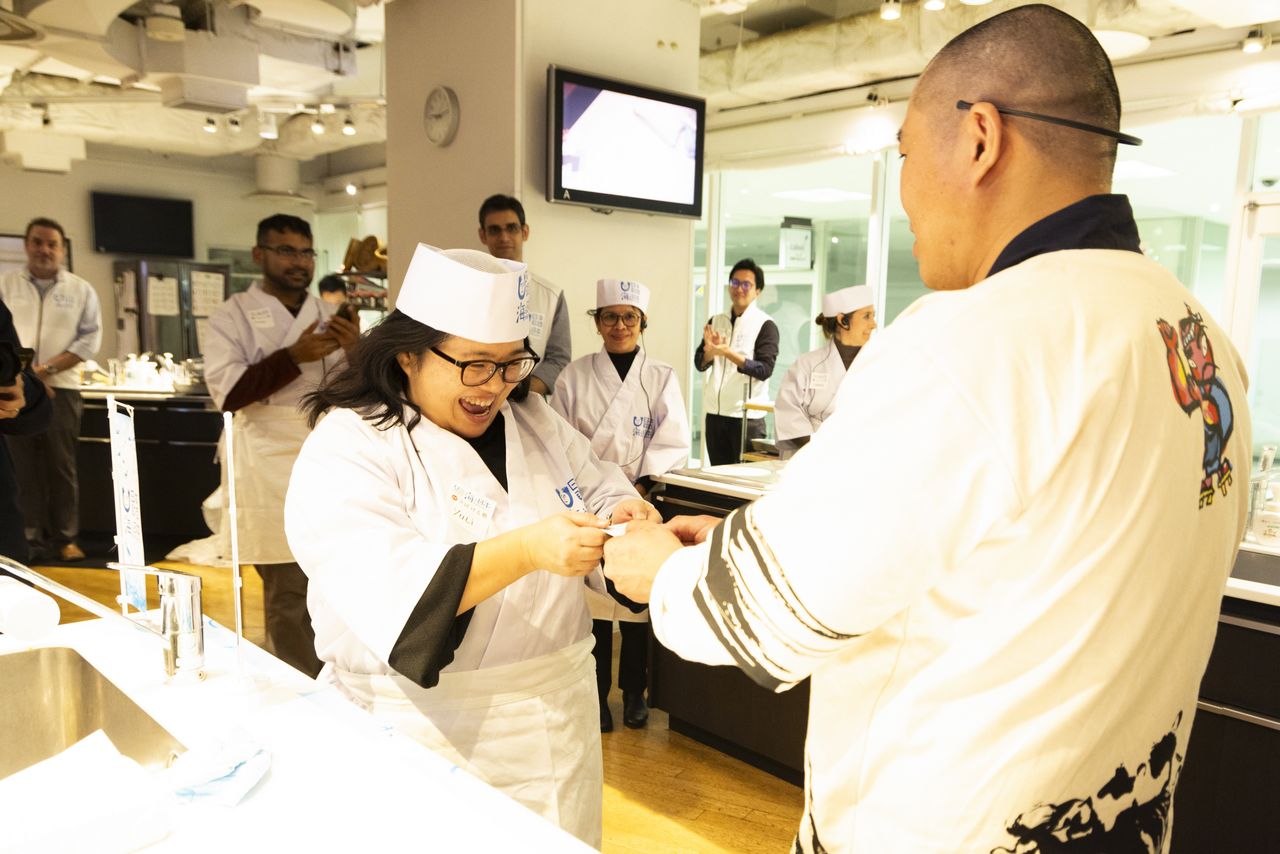
Murata presents an attendant with a card identifying them a “sabakeru master.”
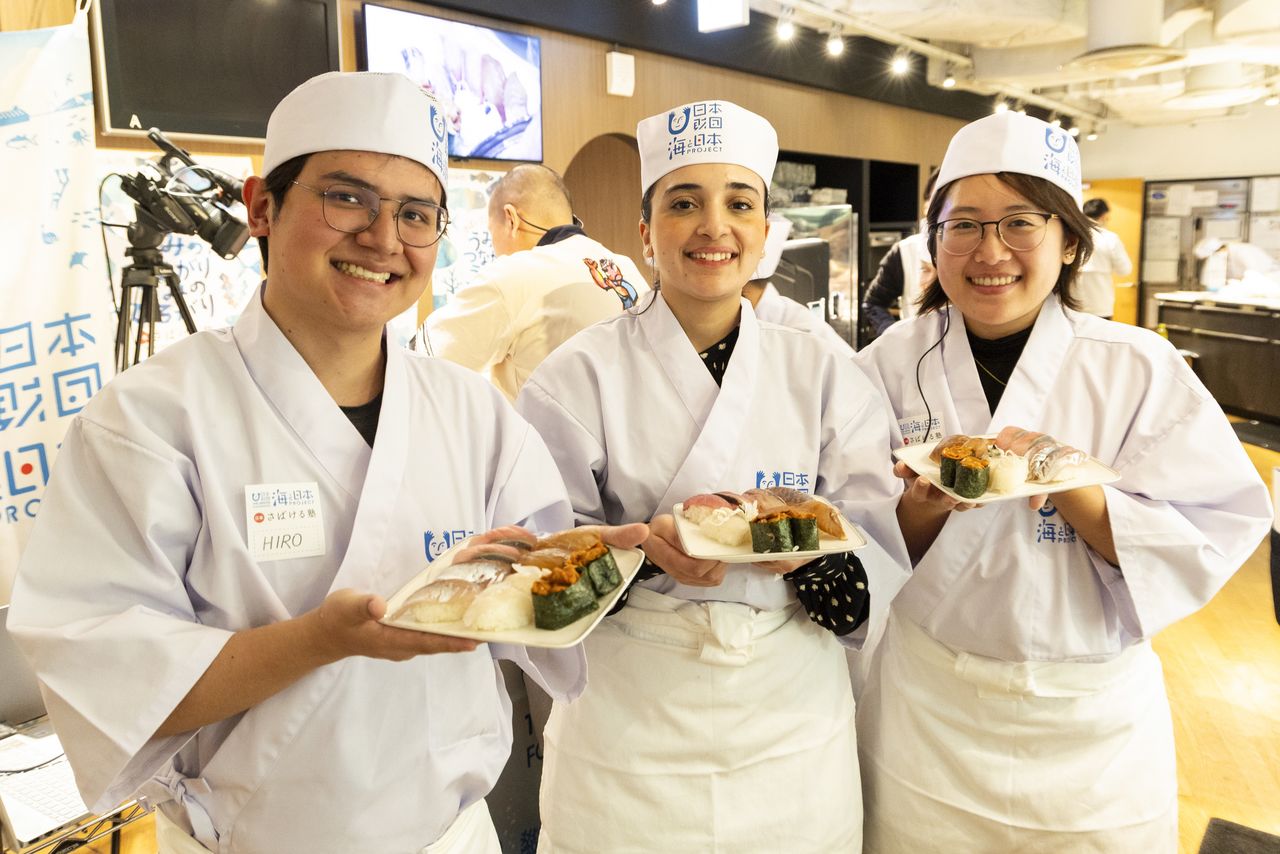
Participants show off their nigirizushi.
(Originally published in Japanese. Reporting and text by Nippon.com. Photos by Kawamoto Seiya.)